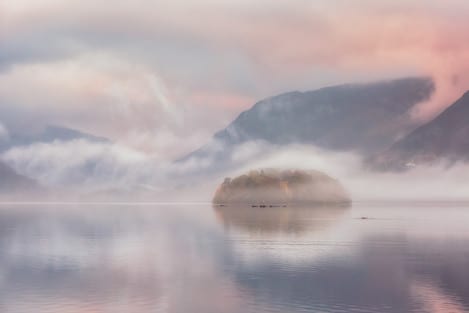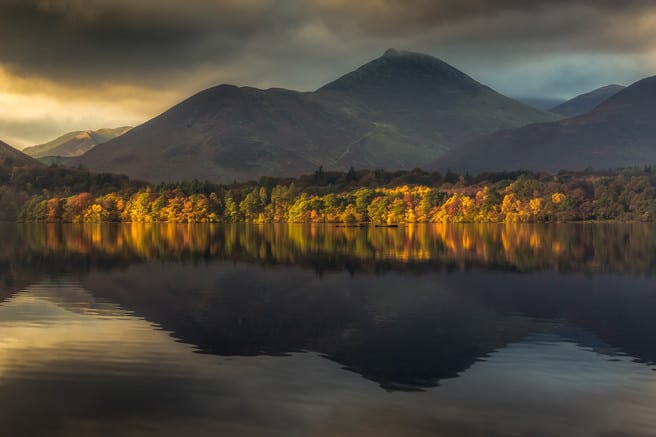Capturing the changing seasons

Verity Milligan
Verity is a professional photographer based in Birmingham where she lives with her wife, Rachel, and their Spaniel/Saluki cross, Talisker. Verity is an ambassador for Zeiss, writes a monthly column for Practical Photography magazine and regularly creates imagery for organisations such as Visit Britain, American Express and Yorkshire Tea. Verity is happiest when outdoors in the landscape, especially during the early morning. Unsurprisingly, Verity is also a big fan of naps.
Making the most of atmospheric conditions
As a landscape photographer, I’m really interested in transitions – whether they’re physical, such as shorelines where land becomes water, or simply changes in weather conditions. The most intriguing of these shifts in conditions is the transition between seasons – those coveted few weeks when one becomes another. For me, (and for many other photographers) these moments can provide the most interesting of conditions and turn a mundane scene into something really special.
As the heat and harshness of summer gives way to the decay of autumn my excitement levels rise. These are the times when warmth and moisture of the day collides with the cool air of the night, ideal conditions for the formation of mist and fog. Whereas most people might wish to stay tucked up in bed on a misty morning, I’m out of bed early ready to capture the best of the conditions. If you’re willing to brave chilly mornings, especially during the change in the seasons, you can be sure you’ll be rewarded with some beautiful, atmospheric conditions.
The colours of autumn
Each year during autumn, I make my way up to the Lake District, where there is such a variety of landscapes and scenery that it’s sometimes overwhelming. There are some spots that I’ve come to know well and they are especially beautiful when the colours of autumn take hold. Some of my most memorable mornings of photography have occurred on the shoreline of Derwentwater, surrounded by swirling mist, still waters and the pastel colours of dawn.
As a photographer, there are many mornings of disappointment permeated with images I’m never likely to share because they aren’t quite up to standard, so when I get a morning when all the conditions conspire I try to make the most of it. This, of course, means I frantically rush from location to location, putting into practice all the skills I’ve honed through each unsuccessful photographic trip.
Reproducing accurate colour
When I get back to my laptop after a morning shoot it’s important that the colours I witnessed on location are replicated accurately on screen. Of course, any camera struggles to reproduce a scene perfectly when compared to how adaptable and versatile our eyes are at distinguishing between colours, tones and contrast. When you’re viewing an image on a non-calibrated monitor, you’re not viewing the true image – the colours might not look how you intended them to, and you may be missing crucial shadow detail.
Getting it right from the get-go will mean you’ll minimise the amount of work you need to do in post-production and this starts with a calibrated screen. Being able to envision a scene on the shoreline during a sunrise, capturing the moment and seeing it come to life on the screen and subsequently in print is ultimately very satisfying. Ensuring I have the right tools to facilitate this process, therefore is invaluable and adds another layer to my workflow. With the right colour management equipment, I can make sure the monitor on my MacBook Pro is always calibrated to perfection in an attempt to get as close to how my eyes saw the scene during the moment it happened.
Making colour management a key part of your workflow, therefore, is essential if you want to avoid this disappointment. It’s a lot easier than you think and will ensure you maintain all the key details of your photo, saving you time and helping you avoid over-editing. This becomes even more important when printing work for customers or exhibitions when you want to be sure the subtle tones in your images are faithfully represented. I can be sure that my images are a true-to-life representation of the transitional light and colour that took place during those beautiful autumnal months.
Verity uses Datacolor Spyder5PRO when calibrating her monitor to achieve accurate colour in her work.




